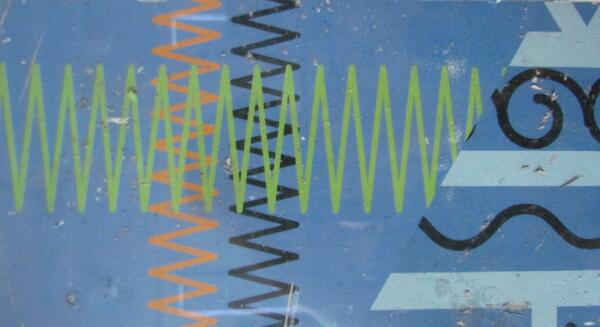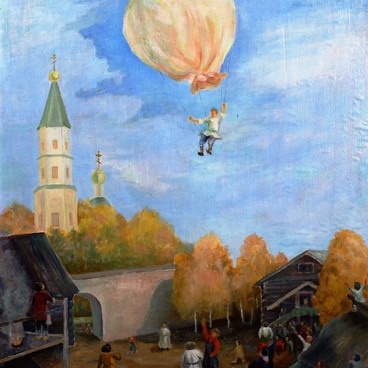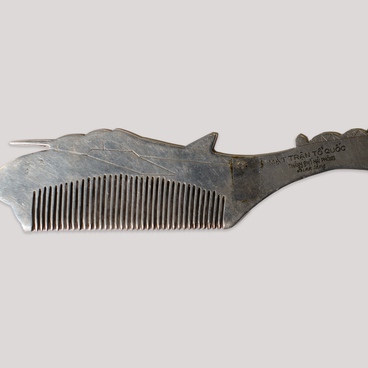The Olympic Torch relay before the Sochi Olympic Games was the longest in Olympic history. It began on October 7, 2013 and lasted four months — until the inauguration. Over this time, 14,000 torchbearers covered 65,000 kilometers on the ground. The Olympic Flame was at the North Pole, at the bottom of Lake Baikal, and on the top of the Elbrus. The Russian symbol of the famous games even spent some time in space.
A fragment of the Soyuz-FG launch vehicle, which delivered the Olympic Flame to the International Space Station (ISS) onboard the Soyuz TMA-11M manned vehicle, is kept in the Gherman Titov Museum.
On November 7, 2013, the symbol of the Olympic Games, unlit for security reasons, arrived in orbit. It was carried through all the interior of the ISS, with every member of the ISS crew holding the torch in their hand for a while in what was a kind of relay stage. Two days later, Russian astronauts took the torch into outer space.
On November 9, 2013, at 18:34 Moscow time, Oleg Kotov and Sergey Ryazansky opened the hatches of the Pirs docking module and left the ship taking the Olympic torch — the symbol of “Sochi 2014” — with them. The torch stayed in outer space for about an hour.
During the time, the Russians held the first torch relay in the history of world sports in outer space: Kotov and Ryazansky passed the central attribute of the Olympic Games to each other several times and waved with it to all the residents of the planet Earth. The cosmonauts were filmed by a camera mounted on board the ISS.
After that, the Russian cosmonauts moved to the ISS cargo boom, where they held another photo and video session. The removal of the torch into space took place without emergency situations: the astronauts fully met the schedule of the ceremonial part. The torch itself was securely attached by two cables to Kotov’s spacesuit so that it would not be accidentally carried away into deep space.
On November 11, 2013, the Olympic torch returned to Earth. It was delivered by the ISS crew consisting of the commander Fyodor Yurchikhin, and the flight engineers Karen Nyberg and Luca Parmitano. They landed in the Kazakh steppe. When the capsule was opened, the crew commander Yurchikhin was holding the Sochi 2014 torch in his hands, which he then handed to representatives of the Organizing Committee for the Olympic Games. It was from this “space” torch that the Olympic flame was eventually lit at Sochi 2014.
The unique exhibit was donated to the museum by the Russian Cosmonautics Federation.
A fragment of the Soyuz-FG launch vehicle, which delivered the Olympic Flame to the International Space Station (ISS) onboard the Soyuz TMA-11M manned vehicle, is kept in the Gherman Titov Museum.
On November 7, 2013, the symbol of the Olympic Games, unlit for security reasons, arrived in orbit. It was carried through all the interior of the ISS, with every member of the ISS crew holding the torch in their hand for a while in what was a kind of relay stage. Two days later, Russian astronauts took the torch into outer space.
On November 9, 2013, at 18:34 Moscow time, Oleg Kotov and Sergey Ryazansky opened the hatches of the Pirs docking module and left the ship taking the Olympic torch — the symbol of “Sochi 2014” — with them. The torch stayed in outer space for about an hour.
During the time, the Russians held the first torch relay in the history of world sports in outer space: Kotov and Ryazansky passed the central attribute of the Olympic Games to each other several times and waved with it to all the residents of the planet Earth. The cosmonauts were filmed by a camera mounted on board the ISS.
After that, the Russian cosmonauts moved to the ISS cargo boom, where they held another photo and video session. The removal of the torch into space took place without emergency situations: the astronauts fully met the schedule of the ceremonial part. The torch itself was securely attached by two cables to Kotov’s spacesuit so that it would not be accidentally carried away into deep space.
On November 11, 2013, the Olympic torch returned to Earth. It was delivered by the ISS crew consisting of the commander Fyodor Yurchikhin, and the flight engineers Karen Nyberg and Luca Parmitano. They landed in the Kazakh steppe. When the capsule was opened, the crew commander Yurchikhin was holding the Sochi 2014 torch in his hands, which he then handed to representatives of the Organizing Committee for the Olympic Games. It was from this “space” torch that the Olympic flame was eventually lit at Sochi 2014.
The unique exhibit was donated to the museum by the Russian Cosmonautics Federation.



